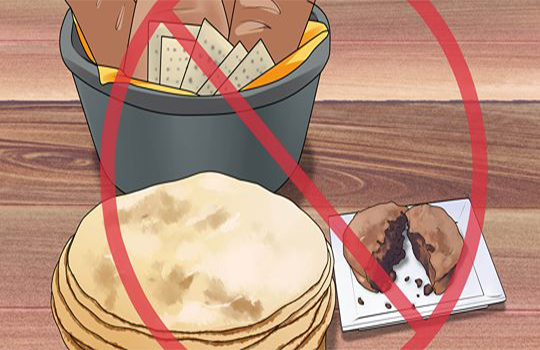How to Avoid Harmful Food Additives
Avoid foods with tartrazine or Yellow #5. Tartrazine is commonly known as Yellow #5 (which its commonly listed as on the ingredient list). It's a coloring that's added to many different types of foods and has been associated with some adverse reactions (especially in children).
·
Some studies have shown that Yellow #5 has been associated with
behavior problems in children. It usually affects children with ADHD and a
confirmed food allergy. Typically, they will show increased hyperactivity and
difficulty paying attention.
·
Yellow #5 is found in a wide variety of foods including Mountain
Dew soda, yellow colored vitamins or medications, macaroni and cheese made with
powdered cheese, yellow colored candies, and yellow colored cereals.
Cut out items containing diacetyl. Unlike Yellow #5, diacetyl is a flavoring, not a color. It's used in a wide variety of processed foods and has been associated with a few adverse health effects.
·
Diacetyl is typically found in foods like microwave buttered
popcorn, "brown" flavorings like butterscotch or maple, some yogurts,
and cheeses.
·
One side effect that has been linked with consumption of foods
containing diacetyl is dementia and Alzheimer's disease. Studies have
shown that consumption of this chemical can lead to plaque build up in the
brain.
·
In addition to dementia, people who breathe in a lot of diacetyl
(like sniffing the popcorn they just popped) or those who work in factories
that make food containing diacetyl have developed a serious respiratory illness
(frequently named "popcorn lung"
Ditch foods containing nitrates or nitrites. Both nitrates
and nitrites are a fairly common preservative found in many foods. Many studies
have shown that both of these additives can cause a variety of health issues,
especially when eaten in large quantities.
·
Both nitrates and nitrites act as preservatives and help foods
from going rancid. They're typically found in foods like cheese, deli meats,
bacon, ham, sausage, hot dogs, and other smoked or processed meats.
·
If you have a diet high in processed meat, your intake of
nitrates and nitrites will be significantly higher. Studies have shown that
this increases your risk for cancer (especially esophageal cancer) and heart disease.
·
The reasoning behind this may be that both nitrates and nitrites
may have a carcinogenic factor to them which means they may support the growth
of cancer cells.
Avoid foods with propyl paraben. Propyl paraben is a preservative found in processed foods and helps to keep foods fresher. This particular preservative is widespread and found in a large quantity of processed foods.
·
Since propyl paraben is so widely used, it is difficult to list
every food that it's found in. However, the most common foods include
tortillas, breads, muffins, food dyes, and even cosmetics and shampoos.
·
Consumption of propyl parabens has been associated with breast
cancer. Studies have been controversial, but propyl parabens act similarly to
estrogen in the body. Increased estrogen activity has been linked to breast
cancer.
·
Studies have also shown that consumption of propyl parabens has
been associated with decreased sperm count and testosterone levels in men.
·
Cut out all foods containing olestra. You might
recognize the name olestra as an additive. It was very popular when the low-fat
and diet foods hit the market. It's a fat substitute and can cause some
unpleasant side effects when consumed.
·
Olestra or Olean is typically found in low-fat diet foods. It's
used to replace natural sources of fat in favor of a lower calorie and lower
fat product. It's commonly found in foods like potato chips, cheese puffs,
tortilla chips, crackers, popcorn, and other savory snack foods.
·
One of the issues with olestra is that it interferes with
vitamin and mineral absorption in the body. Specifically, it inhibits the
absorption of Vitamins A, D, E and K.
·
In addition, one of the most well-known side effects of
consuming foods with olestra is the potential to have very loose stools, anal
leakage, and general GI distress.




Comments
Post a Comment